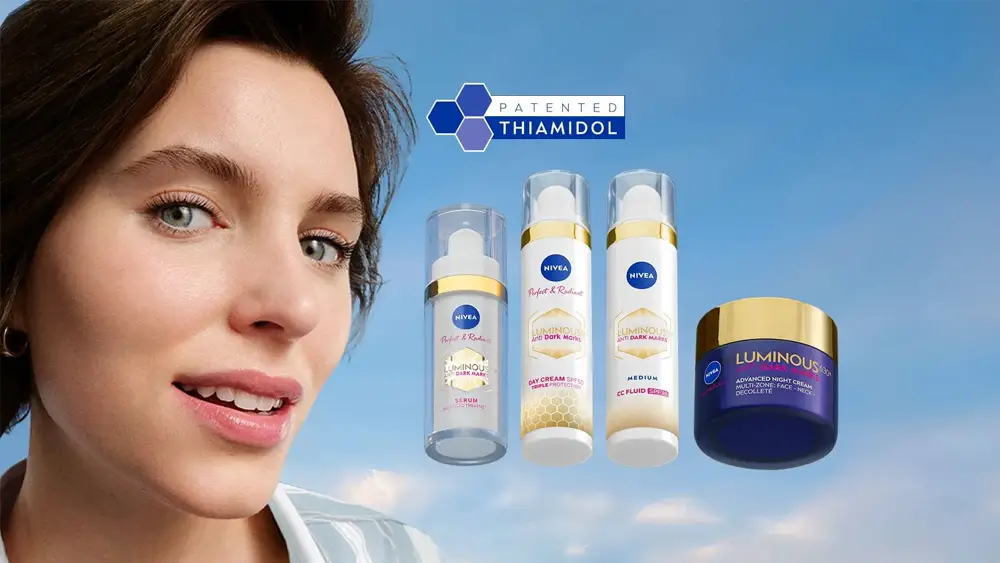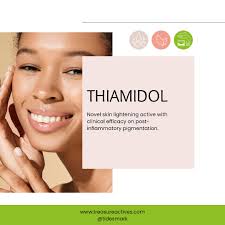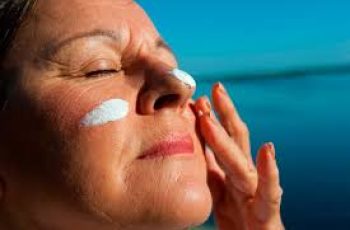

Thiamidol in Skin Care
What is Thiamidol?
Thiamidol (Isobutylamido thiazolyl resorcinol) is an up and coming skin lightening ingredient with potent tyrosinase inhibiting properties.
It is considered to be as powerful or more than hydroquinone, and as of today, no safety concerns have been identified.
This skin lightening ingredient has been making waves in the industry, though it is currently understudied and patented by a single brand.
This ingredient is synthetic, it is not derived directly from any plants or animals. It is made in a lab.
So far, all indications are positive that thiamidol is a safe, effective tyrosinase inhibitor for most skin types.
To find out if this ingredient would fit well in your custom skin care regimen, take our quiz and find your Baumann Skin Type!
How Does Thiamidol Work?
Thiamidol is a Tyrosinase Inhibitor.
This ingredient is very new, so there is no definitive answer on how exactly it interacts with the skin long term. That being said, we can still take note of what the compound is made of.
In our diagram above, notice the hexagon segment on the left of the structure with two legs labeled “HO” and “OH.” That structure is a resorcinol. Resorcinol is a very common tyrosinase inhibitor.
There are two other main components of the structure: the pentagon shaped structure is called a thiazole. Thiazoles are a family of compounds that demonstrate antimicrobial and anti-inflammatory properties. (6,7)
The structure to the right of that is called an amide and since it has 4 non-linear carbons it is isobutylamide.
“Amides” can be understood as a category of compounds that are required for the formation of proteins. Amides play a role in binding and forming amino acids, which are important for developing collagen, repairing the skin barrier, and more. (5)
It is important to note that even though all of these compounds are present in thiamidol, current research has only tested its efficacy as a skin lightener. There is not significant evidence to suggest that this ingredient is a notable anti-inflammatory, moisturizing, or antimicrobial compound.
benefits of thiamidol
Benefits of Thiamidol
Current research suggests that Thiamidol might be a very good skin lightening ingredient. Studies have found it more effective than hydroquinone on some patients.(3)
As a tyrosinase inhibitor, thiamidol is able to help prevent hyperpigmentation before it begins.
Tyrosinase inhibitors stop the conversion of tyrosine into melanin, which is the pigment that gives skin its color.
Some studies claim that Thiamidol is effective at preventing UVB induced changes in pigmentation. (4) This could support its use in some sunscreens.
To find out if Thiamidol is right for your skin care routine, get your recommended regimen through our quiz and see if you need a skin lightener.
Thiamidol side-effects
Side-effects
Some patients in research and the consumer market have experienced mild contact dermatitis from thiamidol.
Otherwise, current studies have not found any notable side-effects associated with thiamidol use.
However, because it is a potent skin lightener, it could be expected that applying this ingredient on spots it isn’t needed can result in some slight skin bleaching.
Is Thiamidol Safe?
As of this blog, no comprehensive safety analyses on thiamidol have been conducted by either the Cosmetic Ingredient Review Panel (CIR) or the Environmental Working Group (EWG), or by any major independent organization.
That being said, some small studies have found general tolerance and safety to thiamidol. (3,9)
If you are concerned about safety, it frankly might be worth waiting for more research before choosing products with thiamidol even though there are currently no contraindications for its use.
Thiamidol for skin lightening
Thiamidol for Skin Lightening
Thiamidol is a potent tyrosinase inhibitor which has successfully undergone studies for PIH, post-acne hyperpigmentation, and Melasma treatments. (3,8)
Thiamidol is increasing in popularity because it has so much potential as a skin lightener. In addition, studies have found that thiamidol is effective for protecting the skin from UVB radiation based pigment changes. (4)
Because no significant stinging or irritation is commonly associated with thiamidol, it can be a great choice for sensitive skin types who need a tyrosinase inhibitor.
PIH, (Post inflammatory hyperpigmentation), has also been shown to improve in Thiamidol trials. (3,8)
Thiamidol for Melasma
Thiamidol is extremely promising as an ingredient in melasma treatment products.
Studies have found that Thiamidol can be just as effective as many of the most popular tyrosinase inhibitors, such as hydroquinone in treating melasma. (8,9)
If you have melasma, thiamidol could be a good ingredient for you depending on your skin type.
Thiamidol vs hydroquinone
Thiamidol Vs Hydroquinone
Thiamidol is exciting because it might be the replacement for hydroquinone that cosmetics companies have been waiting for. Thiamidol is just as, if not more potent than hydroquinone at inhibiting tyrosinase.
At the same time, it has demonstrated far fewer causes for safety concerns. Thiamidol does not seem to absorb into the body as much as hydroquinone, and has not indicated carcinogenesis.(3)
Overall, thiamidol could be seen as the newer, better, safer version of hydroquinone. Whether it has any additional characteristics has yet to be observed in research. As more research comes out on this fascinating ingredient, we will be sure to update this blog so you have nothing but the most up-to-date information on skin health.
Trying to find the best skin lighters for your skin type?
Let me help!
Take the quiz to see which skin car routine is best for you. You get to choose from any brands!


